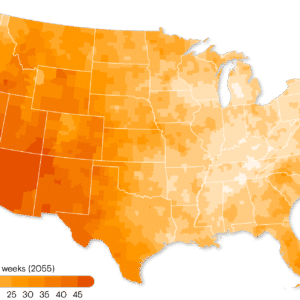Physical Address
304 North Cardinal St.
Dorchester Center, MA 02124
Physical Address
304 North Cardinal St.
Dorchester Center, MA 02124

While hurricanes and wildfires grab headlines, drought is emerging as a more insidious threat to American cities’ financial stability. New research suggests prolonged dry spells pose greater risks to the $4 trillion municipal bond market than floods, hurricanes, and wildfires combined—yet this “dark horse” climate threat receives far less attention from policymakers and investors.
The small Texas city of Clyde exemplifies this growing crisis. When severe drought struck in 2022, the community of 4,000 residents faced a perfect storm of challenges: plummeting water sales revenue, expensive water imports from neighboring cities, and catastrophic infrastructure failures as dried ground cracked and burst sewer lines. The financial strain proved overwhelming—Clyde missed $1.4 million in bond payments, saw its credit rating slashed, and was forced to raise taxes and utility rates just to stay afloat.
Unlike other climate disasters, drought affects entire regions simultaneously and can persist for years with limited federal assistance available. The Federal Emergency Management Agency hasn’t issued a drought-related disaster declaration since 1993, leaving communities largely on their own. This year alone, droughts have impacted 43 states and 125 million people.
Experts warn that by 2040, more outstanding municipal debt will be located in drought-prone areas than in regions threatened by hurricanes, floods, and wildfires combined. As water becomes scarcer and more expensive, the financial pressures could trigger a cascade of municipal defaults, property value declines, and population shifts—fundamentally reshaping America’s economic landscape in ways we’re only beginning to understand.